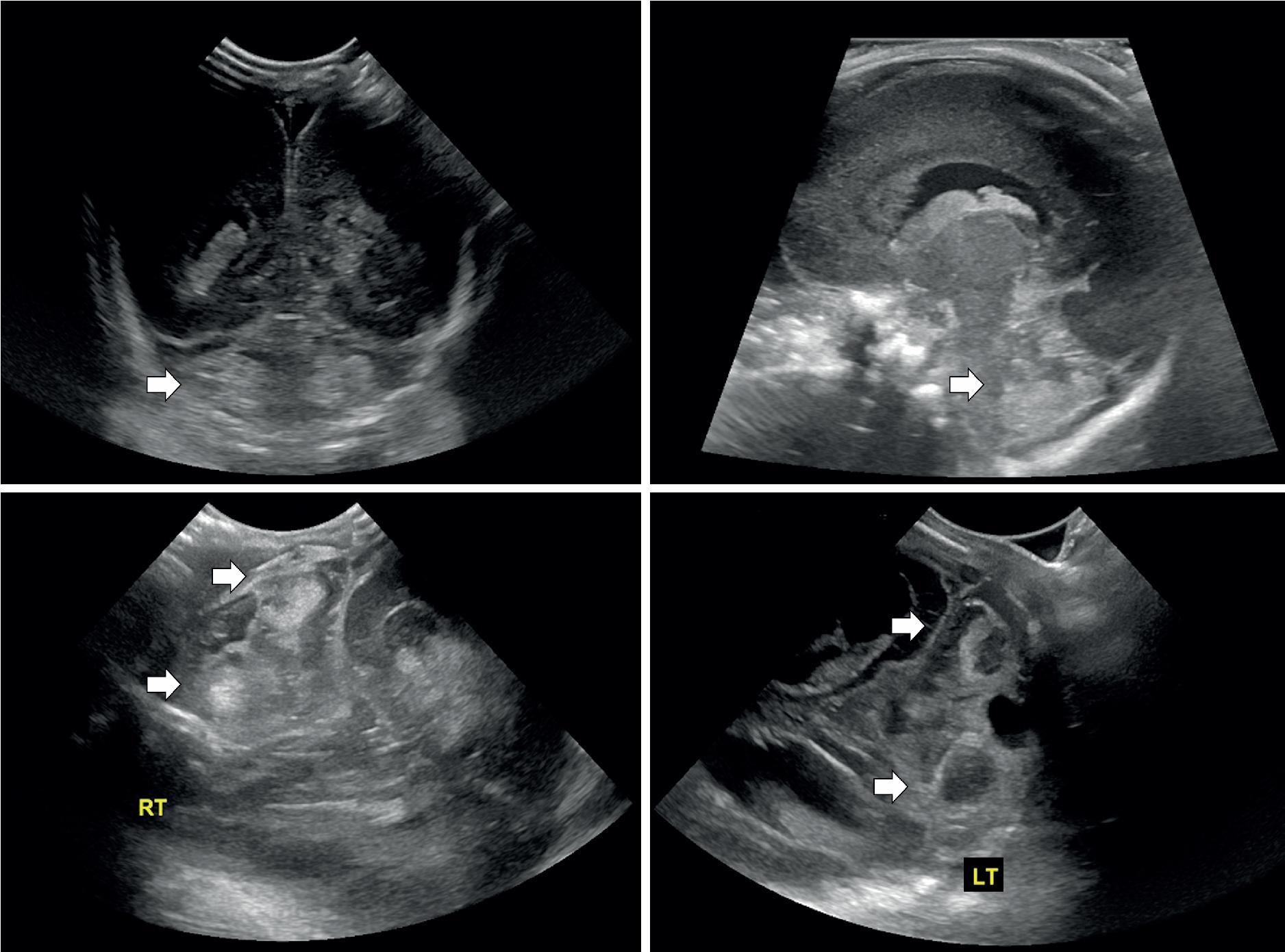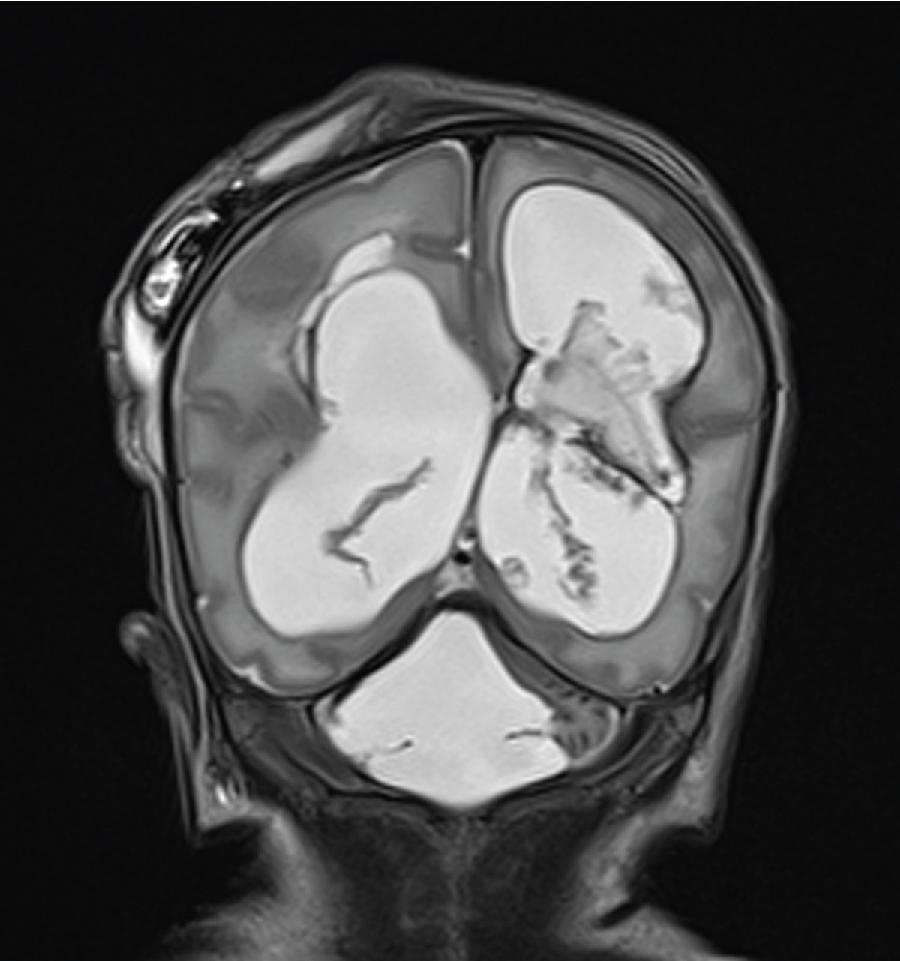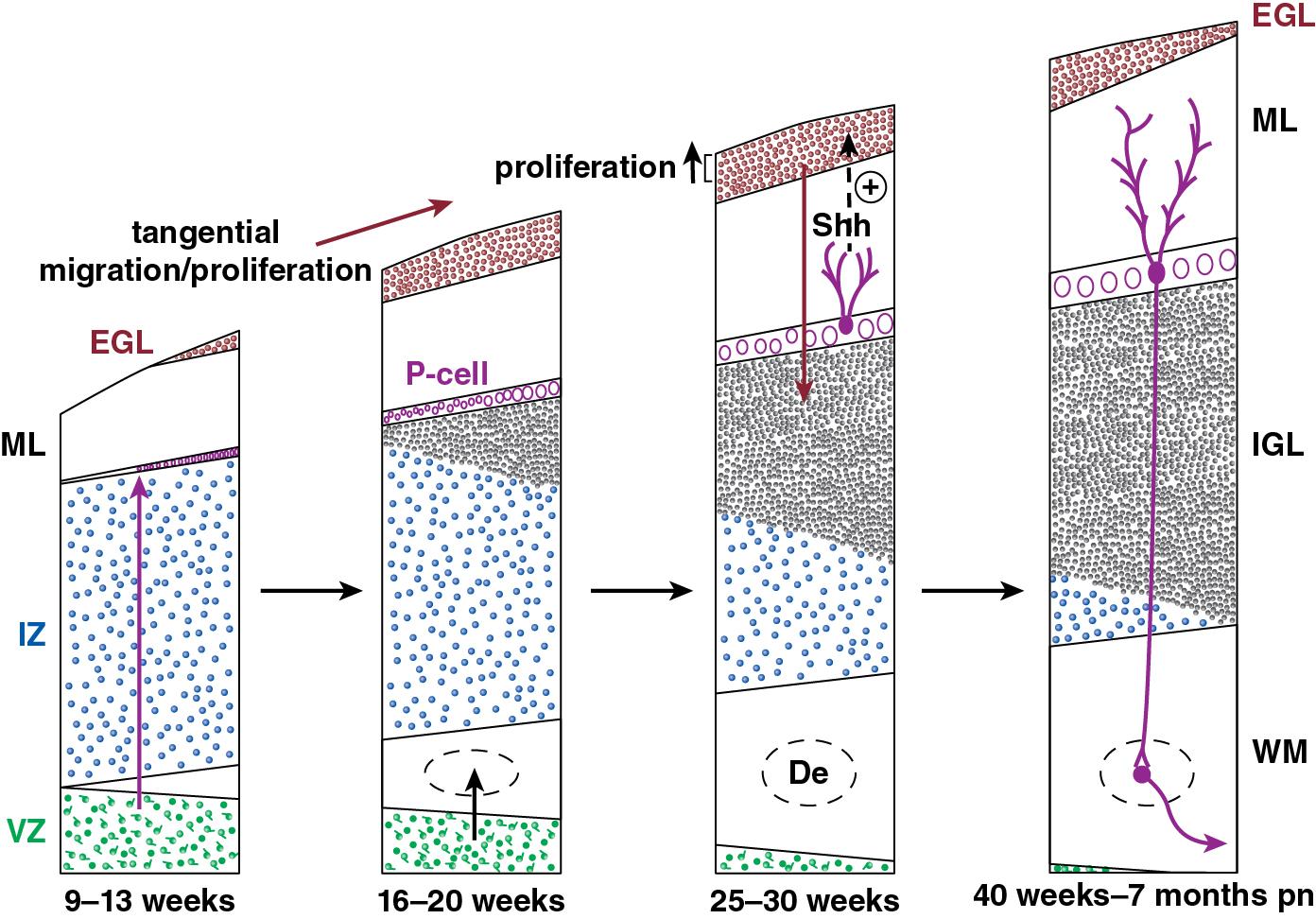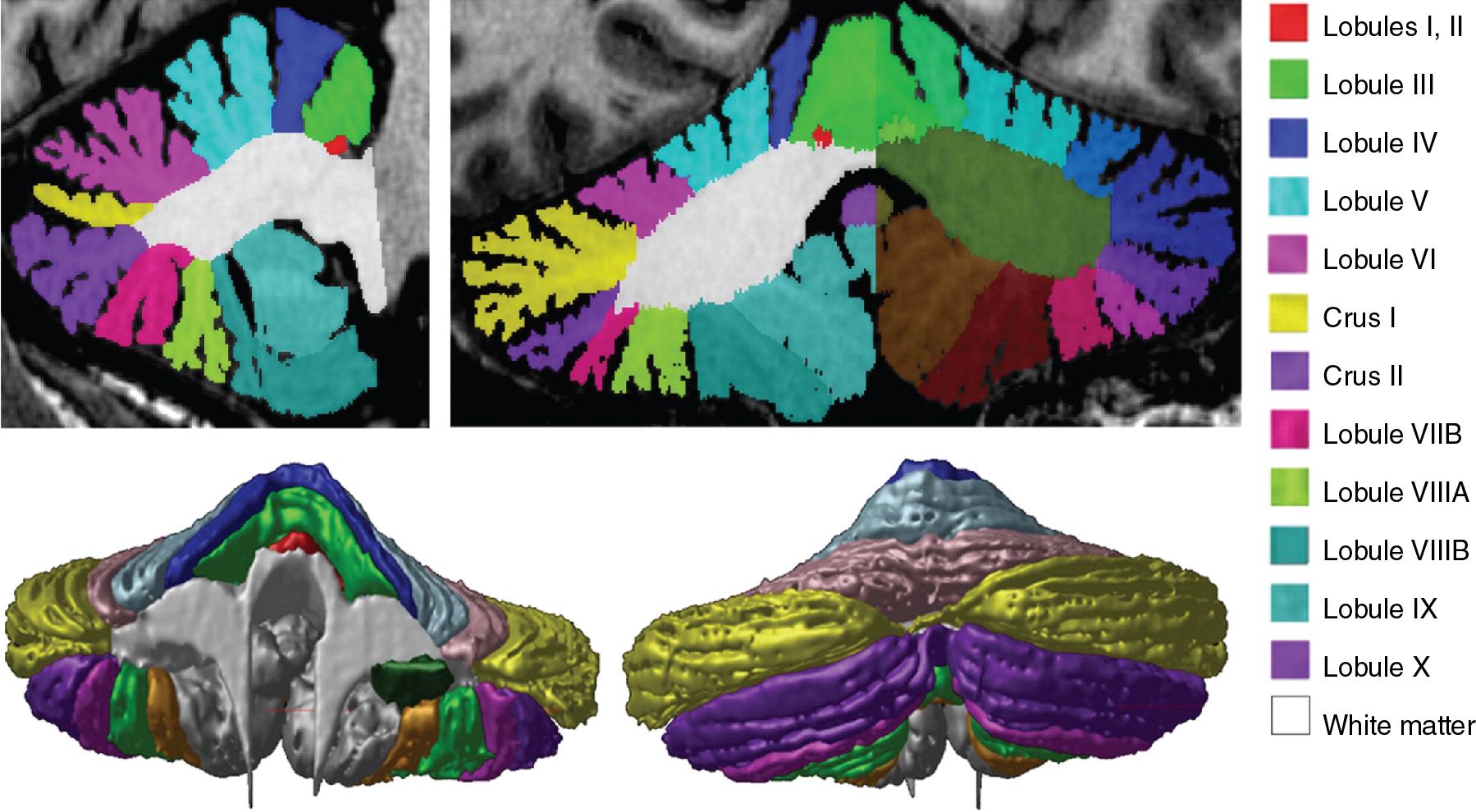Physical Address
304 North Cardinal St.
Dorchester Center, MA 02124
Cerebellar hemorrhages (CBH) likely originate from the external granular layer, which is a superficial germinal matrix within the immature cerebellum.
The anterior lobe of the cerebellum is principally connected with sensorimotor cortex, while the posterior lobe is connected with association regions of the cerebral cortex.
Cranial ultrasound is only capable of detecting relatively large CBH, while MRI can detect punctate CBH, which are typically classified as those less than 4 mm in diameter.
CBH has been associated with motor, visuomotor, cognitive, and behavioral problems in early childhood.
Larger CBH and those affecting the vermis and deeper aspects of the cerebellar hemispheres are more likely to be associated with neurodevelopmental deficits than superficial punctate CBH.
AM was a 600 g 24-week male neonate born to a 30-year-old mother after preterm labor. The mother received two doses of betamethasone but not magnesium sulfate. He was delivered vaginally and his umbilical cord was quickly clamped. At birth he demonstrated minimal respiratory effort and was intubated in the delivery room with a subsequent rise in heart rate. He was subsequently given surfactant for respiratory distress syndrome. On day of life 2 he developed hypotension and anemia for which he received a packed red blood cell transfusion and inotropes. His head ultrasound on day of life 3 revealed bilateral intraventricular hemorrhage with left periventricular hemorrhagic infarction and echogenicities within both cerebellar hemispheres. A repeat head ultrasound on day of life 6 with dedicated views via the mastoid fontanel confirmed bilateral cerebellar hemorrhages (CBH) ( Fig. 5.1 ). Subsequent head ultrasounds showed the evolution of the CBH and an MRI at 34 weeks postmenstrual age showed severe cerebellar atrophy in addition to supratentorial pathologies ( Fig. 5.2 ).


Several questions related to CBH were asked by the bedside staff and the parents: Why did AM develop CBH? Could they have been prevented? How will the CBH impact his life?
Cerebellar hemorrhage (CBH) is a category of preterm brain injury and typically affects newborns born at the lowest gestational ages. , Similar to the supratentorial intraventricular hemorrhages, CBH likely originate from the germinal matrices of the immature cerebellum, and in particular the external granular layer (EGL) which is superficially located beneath the pial layer. The original reports of CBH in preterm neonates relied on postmortem examinations. Subsequently, in the 1980s, reports of CBH detected by ultrasound (US) via the anterior fontanel were described, including by the editor of this textbook. In the 1990s cranial US via the mastoid fontanel provided greater details of CBH. These large hemorrhages described before the more widespread use of MRI in neonatology were associated with death and severe neurodevelopmental impairments. ,
More recently, large CBH have become less common with improvements in the care of the preterm newborn. However, with the increasing use of MRI, smaller CBH referred to as punctate CBH have been increasingly reported in the preterm population. – These punctate CBH are typically defined as those only visible on MRI and measuring <4 mm in diameter on any given imaging plane. , Two recent systematic reviews found wide variations in reported outcomes of preterm children with CBH, likely due to the heterogeneity of the hemorrhages themselves. , Thus it is important to assess the size and location of the CBH and understand the functional topography of the cerebellum.
This chapter reviews the development and function of the cerebellum and the diagnosis and implications of CBH in preterm newborns.
In order to understand the impact of CBH on neurodevelopment, an understanding of the developmental processes that occur in the immature cerebellum and its ultimate anatomic and functional organization is essential. The cerebellum is vulnerable during the preterm period because the cerebellum is in a state of rapid development in the third trimester. During the third trimester, cerebellar volume increases fivefold and the cerebellar surface area increases 20-fold. , Cerebellar proliferation continues into the second postnatal year, by which point the cerebellum contains the majority of all neurons in the central nervous system. The cerebellar cortex is folded into multiple lobes and lobules to accommodate such a large number of cells.
There are two primary neuronal progenitor zones in the developing cerebellum: the rhombic lip, which forms in the dorsolateral part of the alar plate adjacent to the fourth ventricle, and the ventricular zone, which forms on the ventral surface of the alar plate along the lining of the fourth ventricle. , , Progenitor cells from the rhombic lip migrate outward to beneath the pial membrane, to form the EGL. The EGL, therefore constitutes a secondary germinal zone, or transit amplifying center, as it still contains progenitor cells. Neurogenesis in the ventricular zone peaks in the first trimester, whereas neurogenesis in the EGL appears at the end of the embryonic period and persists for several months to 2 years after birth ( Fig. 5.3 ). The Purkinje cells, GABAergic projection neurons, and later the Golgi, stellate and basket interneurons and Bergmann glia arise from the ventricular zone whereas the granule cells, glutaminergic projection neurons, and unipolar brush cells arise from the EGL.

The EGL comprises two sublayers: an external proliferating zone and an inner differentiating zone, which are separated by a vascular bed. , Neuronal precursor proliferation peaks in magnitude during the third trimester in the EGL, induced by sonic hedgehog (SHH) protein secreted by differentiating Purkinje cells. As a result, the EGL and its vascular bed are susceptible to myriad insults during the preterm period. Peak EGL proliferation occurs around postnatal day 7 in mice, which approximately corresponds to the first half of the third trimester in humans. The progenitor pool of the EGL persists longest in the posterior lobe. As precursor neurons mature, they exit the EGL by migrating radially inward to settle beneath the Purkinje cell layer to form the internal granule layer, resulting in the final laminar arrangement of the mature cerebellum.
The development of the cerebellar vasculature may also play an important role in the topography of preterm CBH and as such is worth reviewing. Early in embryogenesis, only the superior cerebellar arteries supply the cerebellar precursor. The posterior inferior cerebellar artery (PICA) is visible in the human embryo only weeks later. In addition the ultimate course of the PICA is the most highly variable among the cerebellar arteries. Macchi et al. speculated that for these reasons, the PICA may represent an acquired source of vascularization via angiotrophic vasculogenesis. In adults the superior cerebellar artery perfuses the anterior lobe, while the PICA perfuses the posterior. It is possible that as an acquired source of vasculogenesis the PICA is more susceptible to the cardiorespiratory perturbations typical of extreme prematurity, although this hypothesis is speculative and not currently supported by experimental evidence.
The posterior cerebellum not only has a distinct arterial supply, but it also has a separate venous system. The superior cortical surface of the cerebellum is drained by the superior vermian veins and the superior hemispheric veins, which empty into the great vein of Galen in the midline. , The posterior inferior cortical surface of the cerebellum is drained by the inferior hemispheric veins, which empty into the transtentorial sinuses, and the inferior vermian veins, which empty into the straight sinus directly or via the medial transtentorial sinuses. The significance of the differential venous drainage toward the topography of preterm CBH is unclear.
The cerebellar cortex is organized into three rostrocaudally oriented compartments: the midline vermis, the paravermis, and the lateral cerebellar hemispheres. The cerebellar cortex of the cerebellar hemispheres connects to the brainstem via three paired cerebellar peduncles, via the cerebellar deep nuclei. The cerebellar deep nuclei are embedded in the white matter of the cerebellum and include, medially to laterally, the fastigial, interpositus (globose and emboliform), and dentate nuclei. The final cerebellar output arises from these deep cerebellar nuclei and exits the cerebellum via the superior and inferior peduncles. The cerebellum projects to specific cerebral destinations and receives input back from these same regions via the middle cerebellar peduncle, and thus forms reciprocal and functional circuits, or closed loops.
The primary fissure divides the cerebellar hemispheres into the anterior and posterior lobes. The cerebellar hemispheres are further folded into multiple lobules. There are 10 lobules in the cerebellar cortex: lobules I–V represent the anterior lobe; lobules VI–IX the posterior lobe; and lobule X the flocculonodular lobe. Lobule VII comprises almost 50% of the cerebellar cortex in humans and is subdivided into crus I, crus II, and VIIB ( Fig. 5.4 ). ,

Accumulating evidence suggests that the role of the human cerebellum extends much beyond motor control to include nonmotor behaviors. This impression originates mainly from functional adult neuroimaging studies showing cerebellar involvement during a range of nonmotor tasks and clinical populations in whom cerebellar damage produces nonmotor deficits in cognition and behavior.
The cerebellum is reciprocally connected with sensorimotor and association regions of the cerebral cortex via the feedforward cortico-ponto-cerebellar and the feedback cerebello-thalamo-cortical pathways. Sensory and motor projections to the cerebellum reveal body maps in the anterior lobe of the cerebellum. The remaining lobules of the posterior lobe of the cerebellum are linked with the parietal and prefrontal association cortices. Much of our knowledge around the functional organization of the human cerebellum comes from task-based and resting-state functional MRI (fMRI) studies. In task-based fMRI studies activations related to cognitive and emotional-affective processes are usually observed in the lateral posterior lobe. ,
Functional and structural imaging studies have revealed regional differences in neonatal and childhood development within the cerebellum. Recently, Herzmann et al. demonstrated via resting-state fMRI that cortico-cerebellar functional connectivity is well-established by term in even preterm newborns. One important difference between functional organization of the cerebellum during the neonatal period relative to that of the adult was discovered in the somatomotor network. In the adult, the cerebellar sensorimotor network is mainly located in the anterior lobe. In contrast to adult studies the study by Herzmann et al. did not find evidence for somatomotor representation in the anterior lobe of the cerebellum. The authors speculated that the somatomotor network and with it the anterior lobe of the cerebellum matures over the first years of life. This discrepancy between the neonatal and adult somatomotor representation in the cerebellum may herald discrepant deficits from similarly located injuries between the two age groups.
Become a Clinical Tree membership for Full access and enjoy Unlimited articles
If you are a member. Log in here